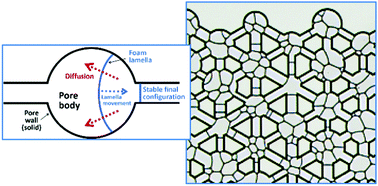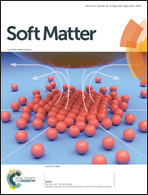Foam flow in a model porous medium: I. The effect of foam coarsening
Abstract
Foam structure evolves with time due to gas diffusion between bubbles (coarsening). In a bulk foam, coarsening behaviour is well defined, but there is less understanding of coarsening in confined geometries such as porous media. Previous predictions suggest that coarsening will cause foam lamellae to move to low energy configurations in the pore throats, resulting in greater capillary resistance when restarting flow. Foam coarsening experiments were conducted in both a model-porous-media micromodel and in a sandstone core. In both cases, foam was generated by coinjecting surfactant solution and nitrogen. Once steady state flow had been achieved, the injection was stopped and the system sealed off. In the micromodel, the foam coarsening was recorded using time-lapse photography. In the core flood, the additional driving pressure required to reinitiate flow after coarsening was measured. In the micromodel the bubbles coarsened rapidly to the pore size. At the completion of coarsening the lamellae were located in minimum energy configurations in the pore throats. The wall effect meant that the coarsening did not conform to the unconstricted growth laws. The coreflood tests also showed coarsening to be a rapid process. The additional driving pressure to restart flow reached a maximum after just 2 minutes.



 Please wait while we load your content...
Please wait while we load your content...